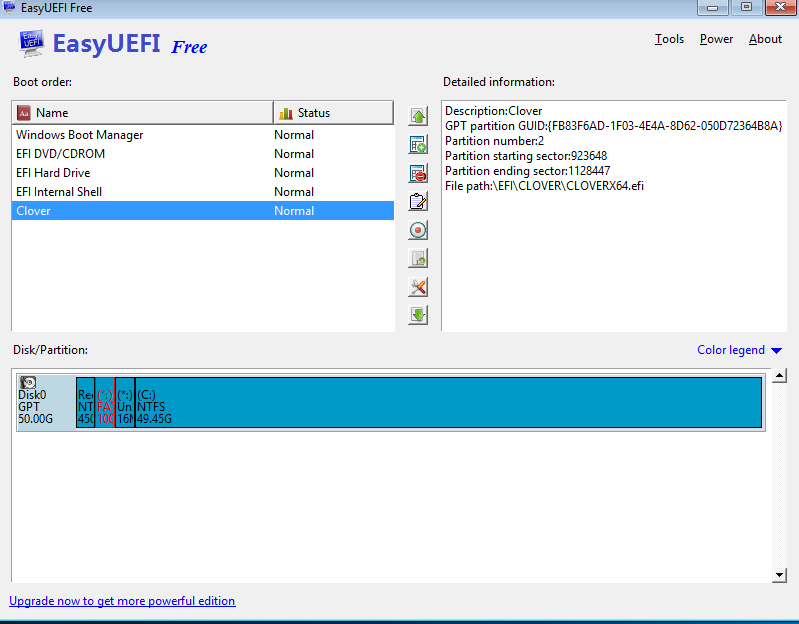

- #Clover efi bootloader windows 10 install#
- #Clover efi bootloader windows 10 driver#
- #Clover efi bootloader windows 10 windows 10#
Else Windows f%#&s around.)Ĭopy \EFI\CLOVER\drivers-Off\drivers64\NvmExpressDxe-64.efi. Just boot a linuxbased distribution with (g)parted and wipe all partitions + create a ntfs filesystem on it. (This happened to me sometimes, when fooling around with different bootloader/filesystem-settings. When it's done, check if you can see a 200MB Partition in your Windows Explorer with files in it. Softly click on "Format Disk" and wait for the magic. (For internal SATA-Devices, you need to go to Options > Configuration > Enable Fixed Disks > OK.) Insert the USB flash drive or SD-card into your machine. Your PCIe SSD should be installed into your machine. I will add it as an alternative option to my guide.
#Clover efi bootloader windows 10 install#
If you find another way to install it without endangering the whole disk, just tell me.

Keep in mind that this installer will wipe the selected disk completely, so backup your data beforehand. In BDU, you still have to enable the listing of internal, fixed disks first. But check first if you have a cardreader, especially when you own a notebook. A good reason to install it to a SATA-device might be, that you don't have any USB-ports left or if you are using a notebook (I don't consider sticking out USB-drives as a permanent and convenient solution). If your legacy BIOS does not support USB-boot, then you shouldn't stick in a PCIe SSD into your machine anyways. You also don't have to worry about data-loss when updating it. It's easily replaceable and fastforward to install.

Alternatively you can also use a SATA-device, but I won't cover the installation to a internal harddisk/SSD in this guide, as I like the concept of a seperate USB-flash for the Clover-EFI bootloader. a plain USB flash drive or SD-card if a cardreader is present
#Clover efi bootloader windows 10 windows 10#
Detailed guide here: Installing Windows 7 on an NVME SSD (from a USB 3.0 thumbdrive) - I will use Windows 10 in this guide)
#Clover efi bootloader windows 10 driver#
You need to insert the Windows 7 / Server 2008 NVMe driver before installing or insert the appropriate "F6-driver" by your vendor while choosing your installation disk in the Windows Installation Setup. Bootable Windows 7 - 10 installationmedia (USB or a plain optical disc) Since the thread opener Nyctophilia hasn't been online for a very long time and his guide may not be up-to-date anymore, I recommend to read do we need?


 0 kommentar(er)
0 kommentar(er)
